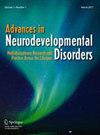The Stress Survey Schedule (SSS): Trends and Normative Data on a Sample of Children with Severe Autism and Related Developmental Disabilities
Abstract
Abstract
Objectives
The purpose of this research was to develop normative data on overall and sub-group stress scores for the Stress Survey Schedule (SSS) for a group of persons with Intellectual Disability and related disorders.
Method
This was a retrospective observational study that utilized Stress Survey Schedule data collected between 2002 and 2021. Historical data was collected on 155 students with Intellectual Disability and related disorders, age 6 to 19.
Results
The “Food-Related Activity” and “Changes and Threats” sub-group scores were significantly higher than the “Pleasant Events” and “Social Emotional Interactions” sub-group scores. Additional comparisons of stress scores by gender and age, and autism diagnosis compared to no autism diagnosis found few differences among sub-group scores. An examination of commonly high and low scoring stressors for each age group found consistency mainly among the younger age groups. For the oldest group, the most common high scoring items were significantly different, suggesting that as persons in this diagnostic group enter young adulthood, what is stressful tends to shift into different areas.
Conclusions
For this population, overall stress is rated as moderate and averaged scores of identified sub-scales are generally consistent across gender, as well as childhood, adolescent and young adult age groups. Items rated as low and high stress tend to be consistent for younger participants, and then change as participants enter young adulthood.

 求助内容:
求助内容: 应助结果提醒方式:
应助结果提醒方式:


